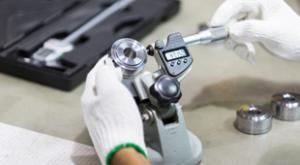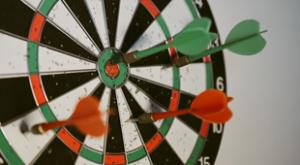All Features

Kari Miller
Traditionally, quality management in the pharmaceutical industry has strayed away from artificial intelligence (AI) for fear of setting it loose with such sensitive information. They have been cautious of implementing an additional element of intelligence into their process. But will organizations…

Gleb Tsipursky
Are employers walking into a legal storm by enforcing rigid return-to-office (RTO) mandates? The post-pandemic era presents a unique challenge as employers grapple with shifting workforce dynamics. The insistence on a full return to the office without considering individual circumstances could lead…

Stephanie Ojeda
There’s an old saying in regulated industries: If it isn’t documented, it didn’t happen.
In the past, maintaining fully compliant documentation meant handling a mountain of paper, which created extra work—and hidden risks—from a quality perspective.
Today, document management has become the…

Brad Jobe
Artificial intelligence (AI) has the potential to reshape the healthcare industry. There is a massive amount of healthcare data available for AI to process. Nearly one-third of the world’s data volume is generated by the healthcare industry, and the volume of big data is projected to increase…

Erin Vogen
One large concern when maintaining a business’ facilities and assets is cost. Managing the costs of repairs, new parts, and personnel can present a challenge.
Although maintenance can be costly, it’s important to see it as an investment that prolongs equipment life span, enhances productivity, and…

Master Gage and Tool Co.
Calibration is essential in almost every facet of industrial processes. The calibration process verifies test instrument accuracy by comparison with recognized standards, and measurement validity hinges on one crucial concept: traceability.
Traceability adherence ensures a continuous link between…

Jón Bergsteinsson
Clinical investigations play an important role in your journey of bringing a medical device to market. While the relevant standards are often perceived as difficult and complex, having a good grasp of them makes the process less confusing.
Understanding ISO 14155:2020 is essential. It’s a guide to…

Megan Wallin-Kerth
We all make mistakes. Despite a vigorous editing process, there may even be one in this article! Although everyone makes mistakes, not everyone owns up to them, and thus they miss an opportunity to grow, learn, and—if they appreciate and apply what they’ve learned—consistently improve the quality…

Shaneé Dawkins
A scene from the movie Ocean’s 8 provides a surprisingly useful lesson on cybersecurity. The character played by Rihanna needs to hack into a security person’s computer. She looks up his social media to find he loves corgis. The Rihanna character sends him a phishing email featuring corgis, and he…

Gleb Tsipursky
In an era when flexibility and autonomy are requirements, financial services leaders are ready to break the chains of traditional office norms. The results of a recent Deloitte and Workplace Intelligence survey make it clear: The future of the financial services sector is hanging in the balance,…

Scott A. Hindle, Douglas C. Fair
We are one year away from the 100th anniversary of the creation of the control chart: Walter Shewhart created the control chart in 1924 as an aid to Western Electric’s manufacturing operations. Since it’s almost prehistoric, is it now time to leave the control chart technique—that started out using…

Rob Moorey
Growing medical equipment inventories and increasing technical complexity are demanding more than ever from the clinical engineering teams responsible for maintaining clinical assets. Simultaneously, a shrinking talent pool of biomedical equipment technicians (BMETs) could lead to large staffing…

Stephanie Ojeda
In December 2023, the U.S. Food and Drug Administration (FDA) expects to issue its long-awaited overhaul of its Quality System Regulation (QSR). The biggest change is that the new Quality Management System Regulation (QMSR) will harmonize with ISO 13485 for medical device quality management. With…

Aymen Saidane
As the manufacturing world pushes toward the goal of zero-defect production, part inspection is critical. Sheet metal’s thinness, coupled with its susceptibility to warping, demands precision inspection—even the most minor deviations have significant implications down the line. This underscores the…

Steve Thompson
If you’ve ever enjoyed the experience of an audit or inspection, then you know it’s about as much fun as having your wisdom teeth extracted. As painful as audits and inspections may be, they are necessary to bring needed medical products to market and monitor them to protect consumers and patients…

Bryan Christiansen
Deciding whether to repair or replace an asset can be difficult. That’s why maintenance and reliability managers perform an analysis to determine whether it’s more economical to repair a failing asset or replace it with a new one. This process helps minimize total costs while ensuring that your…

Douglas C. Fair, Scott A. Hindle
Today’s manufacturing systems have become more automated, data-driven, and sophisticated than ever before. Visit any modern shop floor and you’ll find a plethora of IT systems, HMIs, PLC data streams, machine controllers, engineering support, and other digital initiatives, all vying to improve…

Melissa Stewart
Companies are always looking for ways to bring in fresh ideas and new perspectives. And in an ever-evolving digital world, you can’t blame them. Young talents possess the latest technological skills and insights, which can be incredibly useful in adapting to the times. However, there’s one thing…

Stephanie Hinton
If you’re conducting a clinical investigation of a medical device in a European Union member state, you will be required to submit a clinical investigation report (CIR) along with a summary of the CIR to that member state.
The European Union Medical Device Regulation (EU MDR) lists this as one of…

Stephanie Ojeda
The number of ISO 45001 certificates is growing fast, jumping 54% from 2020 to 2021, according to the ISO Survey.
This occupational health and safety standard is especially prevalent in manufacturing, where managing safety incidents is a core concern from the perspective of protecting workers,…

William A. Levinson
The difference between common (or random) cause and special (or assignable) cause variation is the foundation of statistical process control (SPC). An SPC chart prevents tampering or overadjustment by assuming that the process is in control, i.e., special or assignable causes are absent unless a…

Peter Nathanial, David Zuluaga Martínez, Theodoros Evgeniou, Francois Candelon
Last month, the heads of seven major American AI companies emerged from the White House with an agreement on “self-regulation.” On the other side of the Atlantic, Europeans debate the long-awaited EU AI Act, the next major digital regulation following the EU’s Digital Services Act (DSA). The DSA is…

William A. Levinson
Inflation is a serious national issue. Credit agency Fitch Ratings just downgraded the U.S. credit rating—as in the “full faith and credit of the United States”—from AAA to AA+.1 This doubtlessly reflects the fact that our national debt exceeds $31 trillion, or almost $100,000 for every American,…

Stephanie Ojeda
Untitled Document
Workplace safety incidents are a key driver of risk in manufacturing organizations. There are the obvious risks to workers, whose ability to make a living directly depends on their employer’s approach to safety.
There are also huge risks to companies themselves, which face…

Mark Graban
I can’t count how many times during the past 20 years I’ve heard executives complain that their people aren’t enthusiastically participating in their lean program. Leaders lament that while the company has spent a small fortune to put everybody through continuous improvement training, hardly…